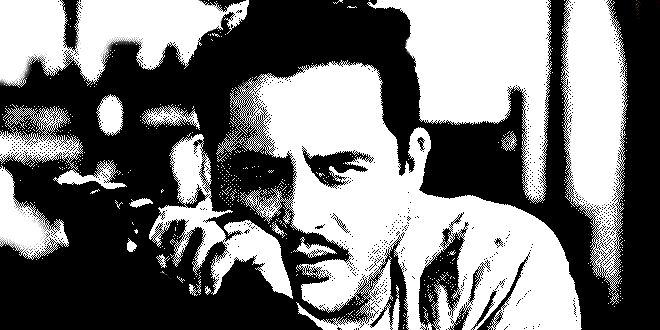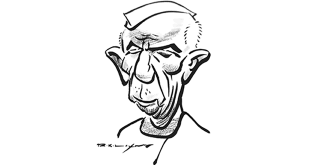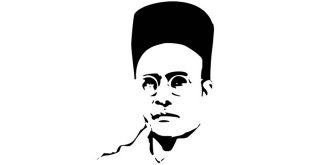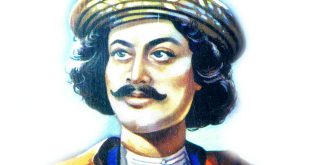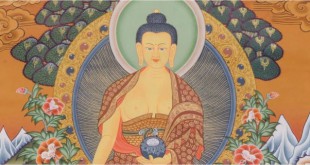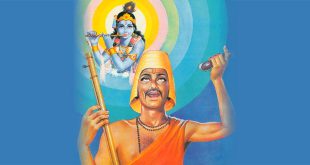Died: 10 October 1964, Mumbai, Maharashtra, India
Occupation: Actor, Producer, Director, Choreographer
Spouse: Geeta Dutt (m. 1953–1964)
Children: Tarun Dutt, Arun Dutt, Nina Dutt
In 2010, he was included among CNN’s “top 25 Asian actors of all time“.
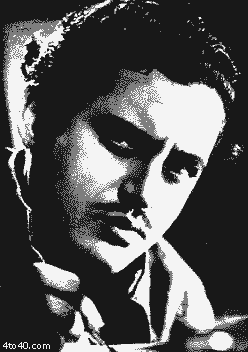 Guru Dutt or Vasanth Kumar Shivashankar Padukone, the famous director and actor was born on 9th July 1925 in Mangalore, Karnataka. He received his early education in Calcutta. Guru Dutt learned dancing at Uday Shankar’s, India Cultural Centre at Almora for two years. Later he moved to Maharashtra where he began his association with the film world. He learned every aspect of film making by assisting major directors in studios like Prabhat, Famous Pictures, Bombay Talkies etc.
Guru Dutt or Vasanth Kumar Shivashankar Padukone, the famous director and actor was born on 9th July 1925 in Mangalore, Karnataka. He received his early education in Calcutta. Guru Dutt learned dancing at Uday Shankar’s, India Cultural Centre at Almora for two years. Later he moved to Maharashtra where he began his association with the film world. He learned every aspect of film making by assisting major directors in studios like Prabhat, Famous Pictures, Bombay Talkies etc.
Dutt’s earliest assignments in the world of commercial cinema was that of a choreographer in the film ‘Hum Ek Hain’ and as an actor in the film ‘Lakhrani’ in 1944. His first big break as a director came with ‘Baazi’ (1951), produced by Dev Anand’s Navketan Studio but it was with ‘Aar Paar’(1954), that Guru Dutt entered his most popular phase as a director. He also proved his mettle as an actor by playing the hero in the film with a style of his own. During this time he married the popular playback singer, Geeta Roy who was to sing some of the best songs in his films.
With Aar Paar, Guru Dutt started his own production company. Other films that established Dutt’s reputation – as an excellent director, ‘Pyaasa’ (1957), ‘Kaagaz Ke Phool’ (1959); as an actor and producer, ‘Chaudvin Ka Chand’ (1960) and ‘sahib Bibi Aur Ghulam’ (1962). The story of Kaagaz ke Phool has glimpses of his personal life. Almost all his films had female as central characters. Famous actresses like Meena Kumari and Waheeda Rehman have given powerful performances in his films. He was so different from his fellow directors in the sense that he made good purposeful, films though not hits at the box office. He had a tragic end at the young age of thirty nine.
Guru Dutt (July 9, 1925 – October 10, 1964) was an Indian film director, producer, and actor. He is most famous for making lyrical and artistic films, including Pyaasa.
Early Life
Guru Dutt was born Vasanth Kumar Shivsankar Padukone in Bangalore to Shivsankar Rao Padukone and Vasanthi Padukone. His parents were Chitrapur Saraswats, originally settled at Panambur, a village in South Kanara. His father was initially a headmaster, and then a bank employee. His mother Vasanthi, while initially a housewife, later taught in a school, gave private tuition and also wrote short stories and translated Bengali novels into Kannada. Vasanthi was only 16 when Guru Dutt was born.
Guru Dutt had a tough childhood with financial difficulties, and a strained relationship between his parents. As a child he had some bad experiences; the hostility from his mother’s brother’s family, a frightening encounter with an insane uncle, and the death of his seven-month old brother.
Guru Dutt was initially named Vasanth Kumar at birth at the suggestion of his mother’s elder brother, but after a childhood accident, he was renamed Guru Dutt, which was felt to be a more auspicious name. He was joined by two younger brothers, Atmaram and Devidas, and a younger sister, Lalitha. The Indian film director, Kalpana Lajmi, is his sister’s daughter.
He spent a great deal of time with his mother’s cousin, Balakrishna B. Benegal (known to the family as Bakutmama) who was a painter of cinema posters. The Indian film director, Shyam Benegal, is the son of Sridhar B. Benegal, Balakrishna’s younger brother.
Bengali Connection
Guru Dutt’s father, who was initially a headmaster at Panambur and later a bank employee at Bangalore, was transferred to Bhawanipore near Calcutta, where Guru Dutt finished his schooling. Hence, Guru Dutt spoke fluent Bengali, and carried a distinct stamp of Bengali culture in his work. Later, when he moved to Mumbai and Bollywood in the 1940s, he dropped the Shivsankar Padukone part of his name, and was known simply as Guru Dutt. Because Dutt is a common Bengali last name, many people assumed that he was a Bengali.
Early Inspirations
His sister recalls that at age 14 Guru Dutt would use his fingers to shape images on a wall lit up by the flickering light of their grandmother’s diya as she performed the evening arti. Though untrained, he could produce inspired movements as he did when he persuaded his uncle, Benegal, to photograph him performing a snake dance, based on a painting by the latter. The snake dance was later performed at a gathering of Saraswat Brahmins at Calcutta for which Guru Dutt was even given a cash prize of 5 Rupees.
He was a good student, but never went to college, partly because of financial troubles at home. Instead, he joined the performing arts troupe of Uday Shankar, the older brother of the better-known Ravi Shankar.
The Uday Shankar India Culture Center at Almora taught dance, drama, and music. It aimed at combining the best of the Gurukula system with a modern Arts University, and tried to turn out well-rounded students, at home in many disciplines. A young Guru Dutt joined the center at age 16 in 1941 on a five-year scholarship of Rs. 75 annually (a lot of money then), and studied at Almora until 1944, when the advancing World War II forced the closing of the center.
Guru Dutt’s First job
Guru Dutt wired home to say he had got the job of a telephone operator at a Lever Brothers factory in Kolkata. But soon he disengaged himself from the job, and joined his parents in Mumbai in 1944.
However, his uncle found him a job under a three-year contract with the Prabhat Film Company in Poona in 1944. This once premier film producing centre had already seen the departure of its best talent, V Shantaram, who had by then launched his own Kala Mandir. It is here that Guru Dutt met two people who would remain his good friends – actors Rehman and Dev Anand.
Guru Dutt acted in a small role as Sri Krishna in Chand in 1944. In 1945, he acted as well as assisted director Vishram Bedekar in Lakhrani, and in 1946 he worked as an assistant director and choreographed dances for P. L. Santoshi’s film, Hum Ek Hain.
This contract ended in 1947, but his mother got him a job as a freelance assistant with Babu Rao Pai. However, after that, for almost ten months, Guru Dutt was unemployed and stayed with his family at Matunga, Mumbai. During this time, Guru Dutt developed a flair for writing in English, and wrote short stories for The Illustrated Weekly, a local magazine. It is during this time that he is supposed to have written the script for the almost autobiographical Pyaasa (Hindi: the thirsty one). Its original name was Kashmakash (Hindi: struggle), which was changed later to Pyaasa.
It is in this phase of his life that Guru Dutt was almost married twice! The first time he eloped with a girl called Vijaya from Pune, and later his parents had him almost married to his maternal niece, Suvarna, from Hyderabad.
Guru Dutt as Choreographer, Actor, Assistant Director
While Guru Dutt was hired by Prabhat as a choreographer, he was soon pressed into service as an actor, and even as an assistant director. At Prabhat, he met Dev Anand and Rehman, who both became stars. These early friendships helped ease his way into the film world.
After Prabhat failed in 1947, Dutt moved to Bombay, now Mumbai, where he worked with two leading directors of the time, with Amiya Chakravarty in Girl’s School, and with Gyan Mukherjee in the Bombay Talkies film Sangram. Then, Dev Anand offered him a job as a director in his new company, Navketan, after the first movie had flopped. Thus, Guru Dutt’s first film, Navketan’s Baazi, was released in 1951.
Dev & Guru’s Promise
There exists a very interesting anecdote behind this new job. Guru Dutt and Dev Anand used the services of the same laundry man when they were at Prabhat in Pune in 1945. One day Dev found that one of his shirts had been replaced with a different one. On arriving at work as the hero of Hum Ek Hain, he found the film’s young choreographer (Guru Dutt) wearing his shirt. On being questioned, Guru Dutt admitted that it was not his shirt, but since he had no other, he was wearing the replacement. This developed into a great friendship, since they were of the same age. They promised each other that, if Guru Dutt were to turn filmmaker, he would hire Dev as his hero, and if Dev were to produce a film then he would use Guru Dutt as its director.
Dev Anand fulfilled his end of the bargain with Baazi, but still regrets that his friend Guru Dutt did not. Guru Dutt indirectly did fulfill his promise. His studio, Guru Dutt Films Pvt. Ltd, produced “C.I.D” which starred Dev, but the film was directed by Raj Khosla (an assistant director to Guru Dutt). Thus, technically, Guru Dutt never directed Dev Anand.
Guru Dutt and Dev Anand would make two super-hit films together, Baazi, and Jaal. Creative differences between Guru Dutt, and Chetan Anand (Dev’s elder brother), who was also a director, made future collaborations difficult.
Baazi’s Other Contributions
Baazi also highlights two early key technical developments in Indian movie-making that are attributed to Guru Dutt. The use of close-up shots with a 100mm lens – there are over 14 in the movie – which became known in Indian movie-making as the “Guru Dutt shot”, and the use of songs to further the narrative in the movie. Guru Dutt also introduced Zohra Sehgal (whom he met at Almora) as the choreographer in the movie, and he also met his future wife, Geeta Dutt during the making of the movie.
Guru Dutt as Director
Baazi was an immediate success. Guru Dutt followed it with Jaal and Baaz. Neither film did well at the box office, but they did allow him to start forming the crew that performed so brilliantly in subsequent films. He discovered, and mentored, Johnny Walker (comedian), V. K. Murthy (cinematography), and Abrar Alvi (writing and directing), among others. Baaz was notable in that Guru Dutt both directed and starred, not having found an actor to take the main role.
Fortune smiled on Dutt’s next film, the 1954 Aar Paar. This was followed by the 1955 hit, Mr. and Mrs. 55, then CID, Sailaab, and in 1957, Pyaasa – the story of a poet, rejected by an uncaring world, who achieves success only after his apparent death. Guru Dutt played the lead role in three of these five films.
His 1959 Kaagaz ke Phool was an intense disappointment. He had invested a great deal of love, money, and energy in this film, which was a self-absorbed tale of a famous director (played by Guru Dutt) who falls in love with an actress (played by Waheeda Rehman, Dutt’s real-life love interest). Kaagaz ke Phool failed at the box office and Dutt was devastated. All subsequent films from his studio were, thereafter, officially helmed by other directors since Guru Dutt felt that his name is anathema to box office.
Guru Dutt’s Last Productions
Guru Dutt was persuaded to star in the 1960 Chaudhvin ka Chand, which was an enormous hit and saved his studio from ruin. He also starred in the 1962 Sahib Bibi Aur Ghulam, which was officially directed by his protege Abrar Alvi. Many critics feel that Guru Dutt ghost-directed the film, for all that his name did not appear in the credits as such. Sahib Bibi Aur Ghulam is still regarded as one of Guru Dutt’s most tragic and artistic films. He also starred in several less-remembered films after “Sahib Bibi Aur Ghulam”.
Guru Dutt’s Death
On October 10, 1964, Guru Dutt was found dead in his bed. He is said to have been mixing alcohol and sleeping pills. His death may have been suicide, or just an accidental overdose.
Guru Dutt’s son, Arun Dutt views this as an accident in an interview with India Abroad in October 2004 on the 40th anniversary of his father’s death. Guru Dutt had scheduled appointments the next day with actress Mala Sinha for the movie, Baharen Phir Bhi Aayengi, and Raj Kapoor to discuss making colour films. According to him, “my father had sleeping disorders and popped sleeping pills like any other person. That day he was drunk and had taken an overdose of pills, which culminated in his death. It was a lethal combination of excessive liquor and sleeping pills”.
Guru Dutt’s Family Life
In 1953, Dutt married Geeta Roy, a well-known playback singer. They had been engaged for three years and had to overcome a great deal of family opposition to marry. They had three children, Tarun, Arun, and Nina.
Unfortunately, the marriage was unhappy. According to his brother Atmaram, Guru Dutt was “a strict disciplinarian as far as work was concerned, but totally undisciplined in his personal life” (Kabir, 1997, p. 124). He smoked heavily, he drank heavily, and he kept odd hours. At the time of his death, he had separated from Geeta and was living alone.
Guru Dutt was involved with actress Waheeda Rehman.
Guru Dutt’s Legacy
Guru Dutt was at first mourned as a matinee idol but as the years passed, it became ever clearer that it was as a director that he would be remembered. Starting in 1973, his films were shown at film festivals throughout India and the rest of the world. Despite being a commercial director, he appealed to the same intelligentsia who made Satyajit Ray an international favorite. He also has a place in the hearts of many ordinary Indians for his brilliant song picturisations and the many vivid characters sketched in his films.
Filmography
Actor
- Sanjh Aur Savera (1964)
- Suhagan (1964)
- Bahurani (1963)
- Bharosa (1963)
- Sahib Bibi Aur Ghulam (1962)
- Sautela Bhai (1962)
- Chaudhvin Ka Chand (1960)
- Kaagaz Ke Phool (1959)
- 12 O’Clock (1958)
- Pyaasa (1957)
- Mr. & Mrs. ’55 (1955)
- Aar Paar (1954)
- Baaz (1953)
- Hum Ek Hain (1946)
- Lakha Rani (1945)
- Chand (1944)
Director
- Baazi (1951)
- Jaal (1952)
- Baaz (1953)
- Aar Paar (1954)
- Mr. & Mrs. ’55 (1955)
- Sailaab (1956)
- Pyaasa (1957)
- Kaagaz Ke Phool (1959)
Producer
- Aar Paar (1954)
- C.I.D. (1956)
- Pyaasa (1957)
- Gauri (1957) Incomplete
- Kaagaz Ke Phool (1959)
- Chaudhvin Ka Chand (1960)
- Sahib Bibi Aur Ghulam (1962)
- Baharein Phir Bhi Aayengi (1966)
 Kids Portal For Parents India Kids Network
Kids Portal For Parents India Kids Network
